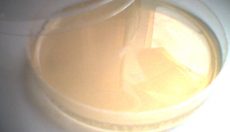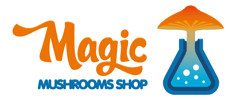How to Make Agar Plates for Growing Magic Mushrooms
Posted under: Latest News

Are you interested in growing magic mushrooms? If so, you may want to consider using agar plates as a starting point for growing healthy mycelium before transferring it to a substrate. Agar plates are petri dishes filled with agar, a gel-like substance that provides a nutrient-rich environment for mushroom mycelium to grow. In this guide, we will provide step-by-step instructions on how to make agar plates, select the best magic mushroom mycelium, work cleanly, recognize contamination, and grow mushrooms from the agar.
Making Agar Plates: : A Comprehensive Guide for First-Time Users
Before making agar plates, you will need to gather the following supplies:
- Agar powder
- Distilled water
- Pressure cooker or autoclave
- Petri dishes with lids
- A heat source (hot plate or stove)
- A digital scale
- Sterilized gloves
- Sterilized face mask
- 70% isopropyl alcohol
- Laminar flow hood (optional but recommended)
Step 1: Weigh and Mix Agar Powder
Using a digital scale, weigh out the desired amount of agar powder. The recommended ratio is 20 grams of agar powder per liter of distilled water. Place the agar powder in a heat-resistant container and add distilled water. Stir the mixture until the agar powder is completely dissolved.
Step 2: Sterilize the Agar Mixture
To sterilize the agar mixture, you will need to use a pressure cooker or autoclave. Pour the agar mixture into sterilized petri dishes and cover them with lids. Place the petri dishes in the pressure cooker or autoclave and follow the manufacturer's instructions to sterilize them. The temperature and time will depend on the type of pressure cooker or autoclave you are using.
Step 3: Allow the Agar Plates to Cool
After sterilizing the agar plates, allow them to cool and solidify at room temperature for several hours. Once the agar has solidified, the plates are ready to be used.
Selecting the Best Magic Mushroom Mycelium
When selecting magic mushroom mycelium to use in your agar plates, you will want to choose a strain that is known for producing high yields and potency. Some of the most popular strains include Golden Teacher, B+ Cubensis, and Penis Envy. You can purchase magic mushroom spore syringes or mushroom cultures from a reputable vendor online.
How to select the best mycelium
The quality of the mycelium that you use for mushroom cultivation is critical to the success of your project. The best mycelium is healthy, vigorous, and free of contaminants. Here are some tips for selecting the best mycelium:
- Choose a strain of mushroom that is well-suited to your cultivation conditions. Different strains of mushrooms have different requirements for temperature, humidity, and light.
- Look for mycelium that is pure white and fluffy. If the mycelium is yellow or brown, it may be contaminated or unhealthy.
- Avoid mycelium that has a sour or moldy smell. This is a sign of contamination.
Working Cleanly
To avoid contamination and ensure the health of your mycelium, it is important to work in a clean environment. A laminar flow hood can provide a sterile working environment, but it is not necessary for first-time users. Instead, you can create a clean working area by wiping down all surfaces with 70% isopropyl alcohol and wearing sterilized gloves and a face mask.
Growing Mushrooms from the Agar
Once your agar plates have healthy mycelium growth, you can use them to inoculate a substrate for fruiting mushrooms. Some popular substrates include brown rice flour, vermiculite, and sawdust. Here are some steps to get you started:
Once your agar plates have healthy mycelium growth, you can use them to inoculate a substrate for fruiting mushrooms. Some popular substrates include brown rice flour, vermiculite, and sawdust. Here are some steps to get you started:
- Prepare your substrate: Depending on the substrate you choose, you will need to prepare it differently. Brown rice flour is often used as a base for many mushroom substrates, and can be mixed with vermiculite, water, and other additives to create a nutrient-rich substrate. Sawdust is another popular substrate that can be mixed with bran or other supplements to create a nutritious growing medium for mushrooms. Make sure to sterilize your substrate before inoculating it with mycelium.
- Inoculate your substrate: Once your substrate is prepared and sterilized, you can inoculate it with your mycelium. This can be done by transferring small pieces of mycelium from your agar plate to your substrate, or by creating a "spawn" jar with your mycelium and allowing it to grow on sterilized grains before adding it to your substrate. Make sure to work in a clean and sterile environment to prevent contamination.
- Allow the mycelium to colonize the substrate: Once your mycelium is added to your substrate, it will need time to colonize the entire growing medium. This can take anywhere from a few days to several weeks, depending on the temperature and humidity of your growing environment. Make sure to keep your growing area clean and free of contamination during this time.
- Induce fruiting: Once your substrate is fully colonized, it's time to induce fruiting. This can be done by changing the temperature and humidity of your growing area to mimic the conditions that mushrooms would naturally grow in. Different species of mushrooms require different environmental conditions, so make sure to research the specific needs of your chosen species.
- Harvest your mushrooms: When your mushrooms are fully grown and mature, it's time to harvest them. Make sure to use clean and sterile tools to cut the mushrooms from the substrate, and harvest them before they begin to release spores.
Recognizing Contamination
One of the biggest risks of growing mushrooms from agar plates is contamination. Contamination can occur from bacteria, mold, or other fungi that can grow on your agar or substrate and compete with your mycelium for resources. Here are some signs of contamination to look out for:
- Foul odors: If your agar or substrate begins to emit a foul odor, it may be a sign of bacterial contamination.
- Discoloration: If your agar or substrate begins to change color or develop spots, it may be a sign of mold or bacterial contamination.
- Strange growth patterns: If your mycelium is growing in strange patterns or producing unusual structures, it may be a sign of contamination.
If you suspect that your agar or substrate is contaminated, it's important to dispose of it properly and start over with a new batch. It's also important to take preventative measures to minimize the risk of contamination in the future, such as working in a clean and sterile environment, using proper sterilization techniques, and avoiding introducing contaminants from other sources.
Conclusion
Growing mushrooms from agar plates can be a rewarding and enjoyable experience for first-time growers. By following the steps outlined in this guide and taking the necessary precautions to prevent contamination, you can successfully grow healthy and delicious mushrooms at home. Remember to always work in a clean and sterile environment, choose the best mycelium for your desired species, and properly dispose of any contaminated materials. With patience and attention to detail, you can grow a bountiful harvest of mushrooms right in your own home.


February 24, 2022